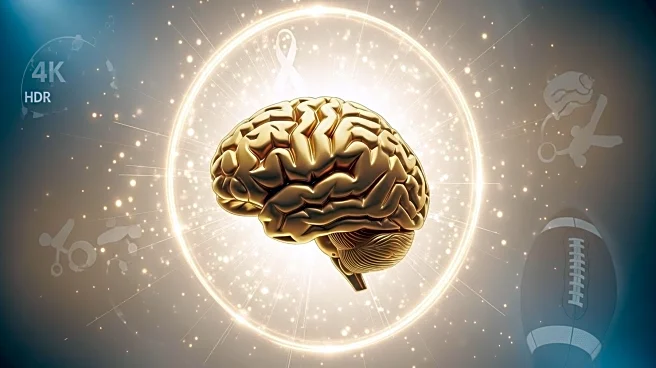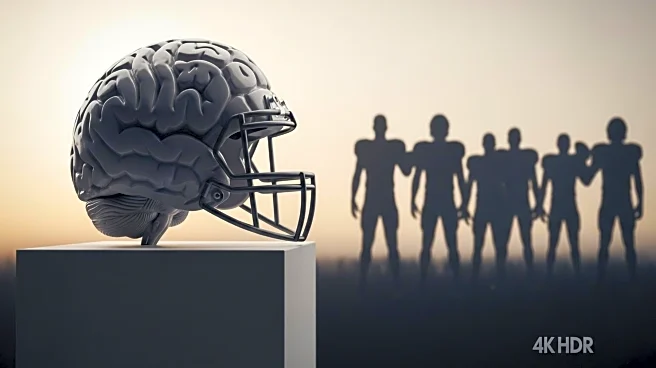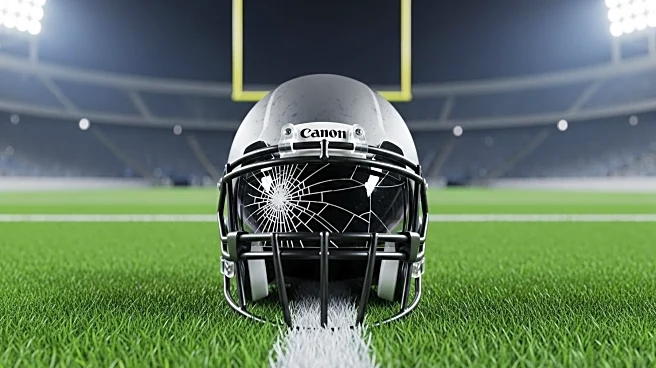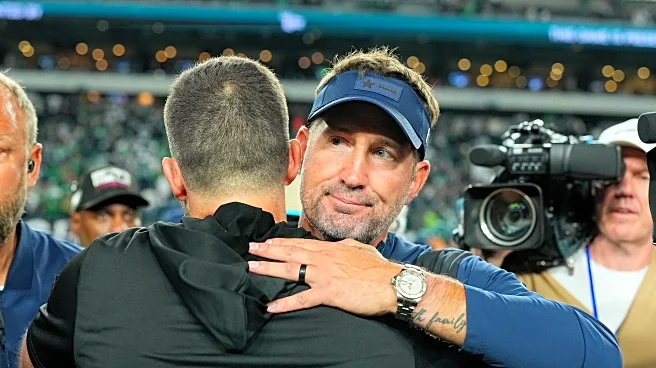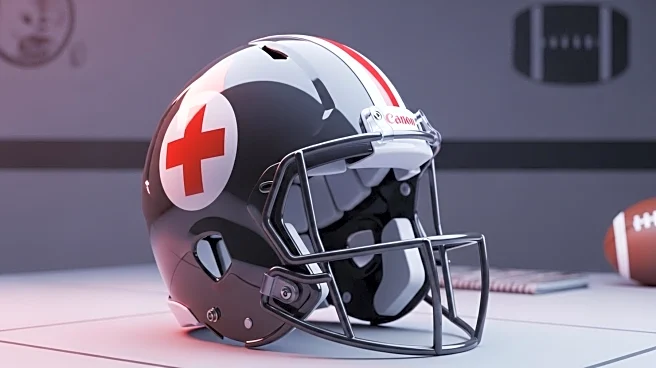What's Happening?
As the 2025 NFL season kicks off, there is a growing awareness among players and fans about the risks associated with chronic traumatic encephalopathy (CTE), a serious brain disorder linked to repeated head impacts. CTE, which can lead to symptoms such as memory loss, depression, and mood swings, has been primarily identified in former NFL players posthumously. Research indicates that the disorder is caused by the abnormal accumulation of the tau protein in brain cells, leading to long-term brain damage. The National Institutes of Health (NIH) and other research institutions are actively studying CTE, with efforts focused on understanding its prevalence, risk factors, and potential diagnostic methods for living individuals. This increased awareness is influencing changes in sports safety protocols and equipment design to mitigate the risk of head injuries.
Why It's Important?
The heightened focus on CTE has significant implications for the sports industry, particularly contact sports like football, hockey, and boxing. Understanding and addressing CTE is crucial for the health and safety of athletes, as well as for the sustainability of these sports. The research efforts led by the NIH aim to develop diagnostic tools and treatments that could potentially reduce the incidence of CTE. This could lead to changes in how sports are played, with stricter safety regulations and improved protective gear. Additionally, the findings could influence public policy and healthcare practices related to brain injuries, benefiting not only athletes but also military veterans and others at risk of repeated head trauma.
What's Next?
Researchers are working on developing methods to diagnose CTE in living individuals, which could revolutionize the approach to managing and preventing the disorder. Potential diagnostic tools include brain imaging and blood tests to identify biomarkers of brain damage. These advancements could enable earlier detection and intervention, potentially reducing the severity of symptoms. The NIH continues to fund research projects aimed at understanding brain injuries and testing possible treatments. As awareness grows, there may be further changes in sports regulations and equipment standards to enhance player safety.
Beyond the Headlines
The issue of CTE extends beyond sports, affecting military veterans and victims of domestic violence who have experienced repeated brain injuries. The ethical considerations of player safety versus the commercial interests of sports leagues are also at play. Long-term, the research on CTE could contribute to broader understanding and treatment of neurodegenerative diseases, impacting public health strategies and resource allocation.
